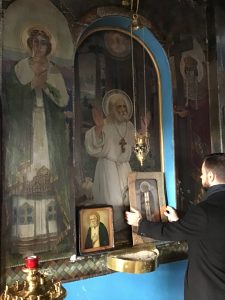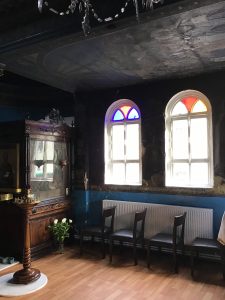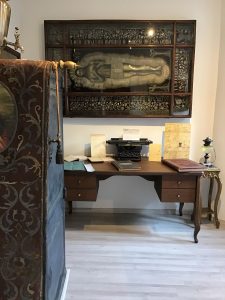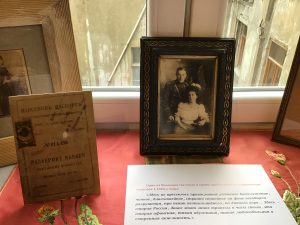VISIT TO A RUSSIAN CHURCH IN KARAKÖY
Karaköy was an arrival point for many Russian émigrés coming by dozens of ships to Istanbul. For Ekaterina Aygun Karaköy became a starting point of her fieldwork.
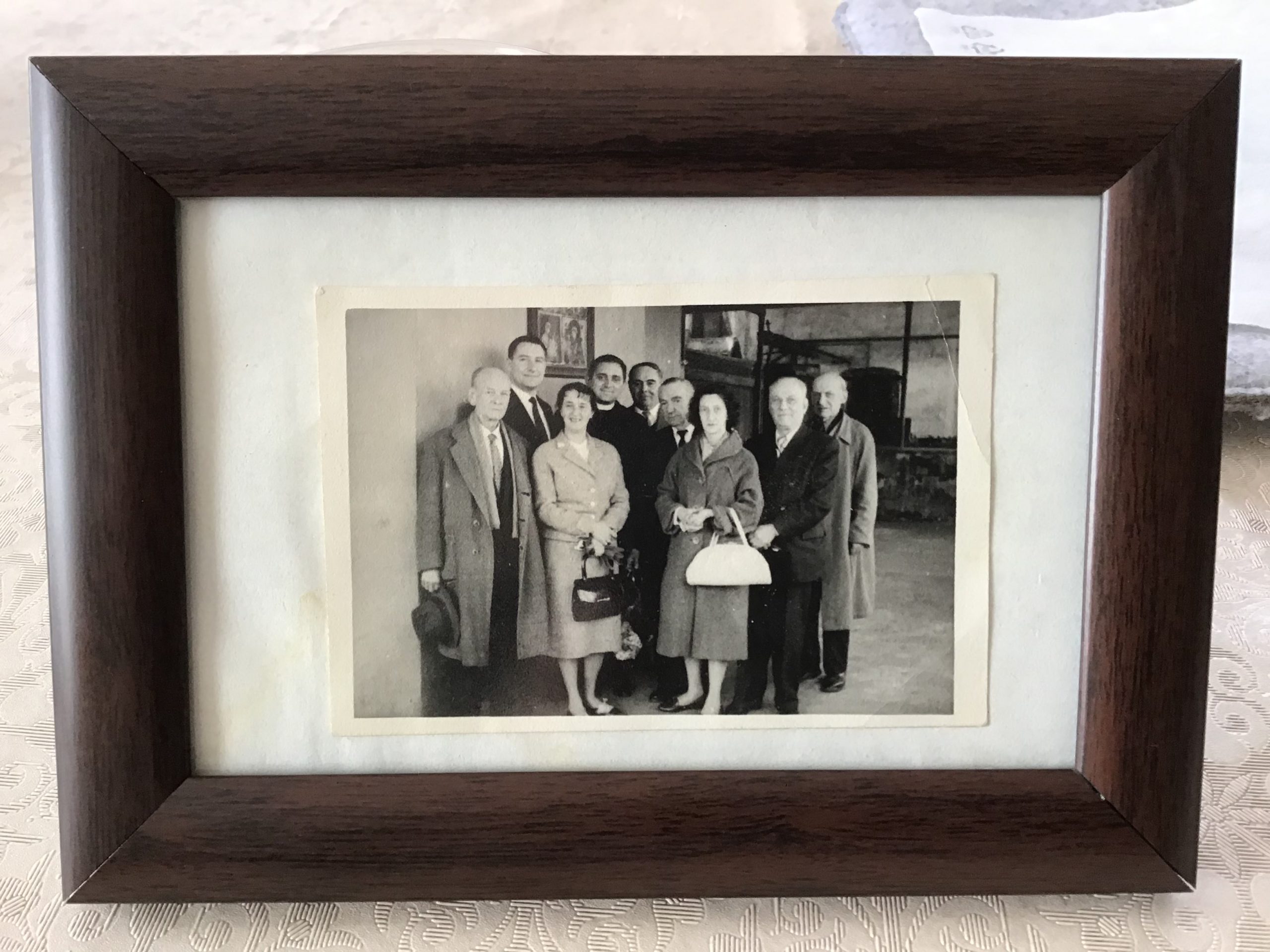
Where can one find traces of Russian émigrés? The first thing that comes to mind is an archive, or you can also try to find the descendants of “White émigrés” still living in a city. However, in the case of Istanbul, perhaps the most appropriate option would be to visit the Russian Orthodox Compounds (“podvor’ye” in Russian language) in Karaköy district. They were centers of attraction, meeting places and points of contact for many “White émigrés” who arrived in Istanbul from various parts of the Russian Empire. Here, parishioners prayed, sang, communicated, helped each other and celebrated holidays. It is known that before there were a lot of compounds in Karaköy, but over time their number have decreased to three: Ilyinskoye, Panteleimonovskoye and Andreevskoye. Andreevskoye is unique from the point of view that some of its walls were painted by the Russian émigré artist Nikolai Peroff. Moreover, they have been preserved and are in pretty good condition (although it’s worth noting that the location on the top floor, blown by all the winds, still makes itself felt and the paintings suffer because of humidity).
In addition, there is a small “museum” inside the Andreevskoye Podvor’ye, where different belongings, photographs, documents, musical notes and other exhibits were collected. All of them have a story behind and tell us about how Russian-speaking emigrants fled to Istanbul, how they lived here, what they did and dreamed about. There is no such place anywhere else in Turkey. The compound (and the “museum” in particular) was kindly shown to me by Father Viktor, and more detailed information about it was provided by the regent Evelina Davydova. I hope that Andreevskoye Podvor’ye will continue to be a place in which the spirit of that time is still alive.



